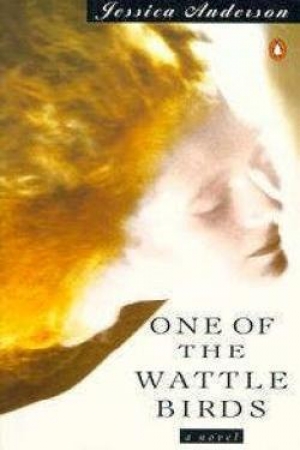Jessica Anderson
Kerryn Goldsworthy on 'Tirra Lirra by the River' by Jessica Anderson for Reading Australia
In 1978, Australia’s two most coveted national literary prizes of the time were both won by women: Helen Garner’s first novel Monkey Grip (1977) won the National Book Council Award for fiction, and the Miles Franklin Literary Award was won by Tirra Lirra by the River (1978), Jessica Anderson’s fourth novel. Both of these books have since become classics of Australian literature, rarely out of print and regularly rediscovered by new generations of readers.
Australian fiction, both in its production and in its critical reception, had been dominated by male writers since the end of World War II. There were isolated exceptions, most notably Christina Stead, Elizabeth Harrower, and Thea Astley, all now regarded as major Australian novelists. But the two big awards to Anderson and Garner in 1978 marked a shift in readerly tastes and the beginning of something more like equality in the writing, publishing, and reading of fiction in Australia. It may or may not be a coincidence that the narrator–heroines of Monkey Grip and Tirra Lirra by the River are both called Nora; it’s the name of the main character in Ibsen’s classic play A Doll’s House (1879), which, like these novels, explores the theme of women’s emancipation and selfhood in modern society.
... (read more)Jessica Anderson
Wednesday, 11 February 2015Jessica Anderson (25 September 1916 – 9 July 2010) was an Australian novelist and short story writer. Anderson’s first novel, An Ordinary Lunacy was published in 1963. Since then she has received many awards for her work including winning the prestigious Miles Franklin award, twice (for Tirra Lirra By the River in 1978 and for The Impe ...
Susan Sheridan’s Nine Lives, a ‘group biography’, analyses the life stories and literary achievements of nine Australian women writers. The purpose, according to Sheridan, is not only to rediscover the life story of each, but also, by exploring their publishing and aesthetic context, to create a ‘fresh configuration’ of our literary history.
... (read more)''Tirra Lirra' and Beyond - Jessica Anderson’s truthful fictions' by Susan Sheridan
Jessica Anderson’s One of the Wattle Birds celebrates the painful arrival into adulthood of Cecily Ambruss. Cecily is nineteen years old. She lives in a flat with her boyfriend, Wil, who, appropriately in view of his name, is studying Law. Cecily is an English student and during the three days over which the novel is set they are both preparing for end-ofyear exams. They are a bright, intelligent, attractive couple. The previous year they backpacked through Europe and India with four friends. Workmen are making a racket in the building where they live (this novel moves between noise and silence) and things are a bit hectic and scattered but not unbearable. In fact, Cecily’s life seems to be following a fairly conventional path towards marriage and a comfortable future in one of Sydney’s pleasanter suburbs.
... (read more)Paul Salzman reviews 'Stories from the Warm Zone' by Jessica Anderson
In her interview with Candida Baker for Yacker 2, Jessica Anderson expresses her dissatisfaction with the covers of a number of her books, citing in particular the glum face on the paperback of The Impersonators and the representation of The Commandant as, in Baker’s words, ‘a Regency romance’. Anderson, who began as a commercial artist, stresses that ‘Design and presentation ... really matter. They’re the introduction to a book.’ It seems to me to be particularly unfortunate (although she may well have given it her blessing) that her new book sports a clichéd Ken Done cover. Perhaps Done’s bright colours might evoke the ‘warm zone’ of the title, although Anderson is referring to Brisbane, not Done’s mock-naïve view of Sydney. Unfortunately, the cover subliminally suggests that Anderson’s writing is sunnily comforting, easily assimilated.
... (read more)Rosemary Creswell reviews 'The Impersonators' by Jessica Anderson
As she did so vividly in Tirra Lirra by the River, Jessica Anderson uses a returning expatriate woman to cast fresh eyes on the social and urban landscape of Australia. Here, it is Sylvia Foley who has spent some twenty years in Europe eschewing the comforts and constraints of suburban life, teaching Italian and conducting tours of the British Isles and the Continent. On a whim, she abandons her peripatetic life to return to Sydney for a few months prior to her plan to settle in Rome. Unbeknown to her, her autocratic father, Jack Cornock, is dying and she is immediately suspected by other members of her dislocated family of returning to benefit from the will – which she ultimately does as the recipient of her father’s vindictive gesture to spite his wife. And Sylvia’s ‘family’ is considerable. There is her illiterate mother Molly, now married to Ken, her brother Stewart, and her stepsiblings: Harry, Rosamond, Hermione, and Guy, the children of her father’s second wife, Greta.
... (read more)On Jessica Anderson, Nene Gare, Michael Wilding, and Damien White
In Tirra Lirra by the River, an elderly woman, Norah Porteou, returns to live in her childhood home in Brisbane after forty years as a ‘London Australian’. The house is empty, so is her life. Norah is a ‘woman whose name is of no consequence’. She is sensitive, vaguely artistic, slightly superior (‘Mother,’ she appeals in a childhood scene, ‘don’t let Grace call me Lady Muck.’) The novel consists of a review of her past, with interruptions from half-remembered neighbours offering curious and resentful help.
... (read more)


